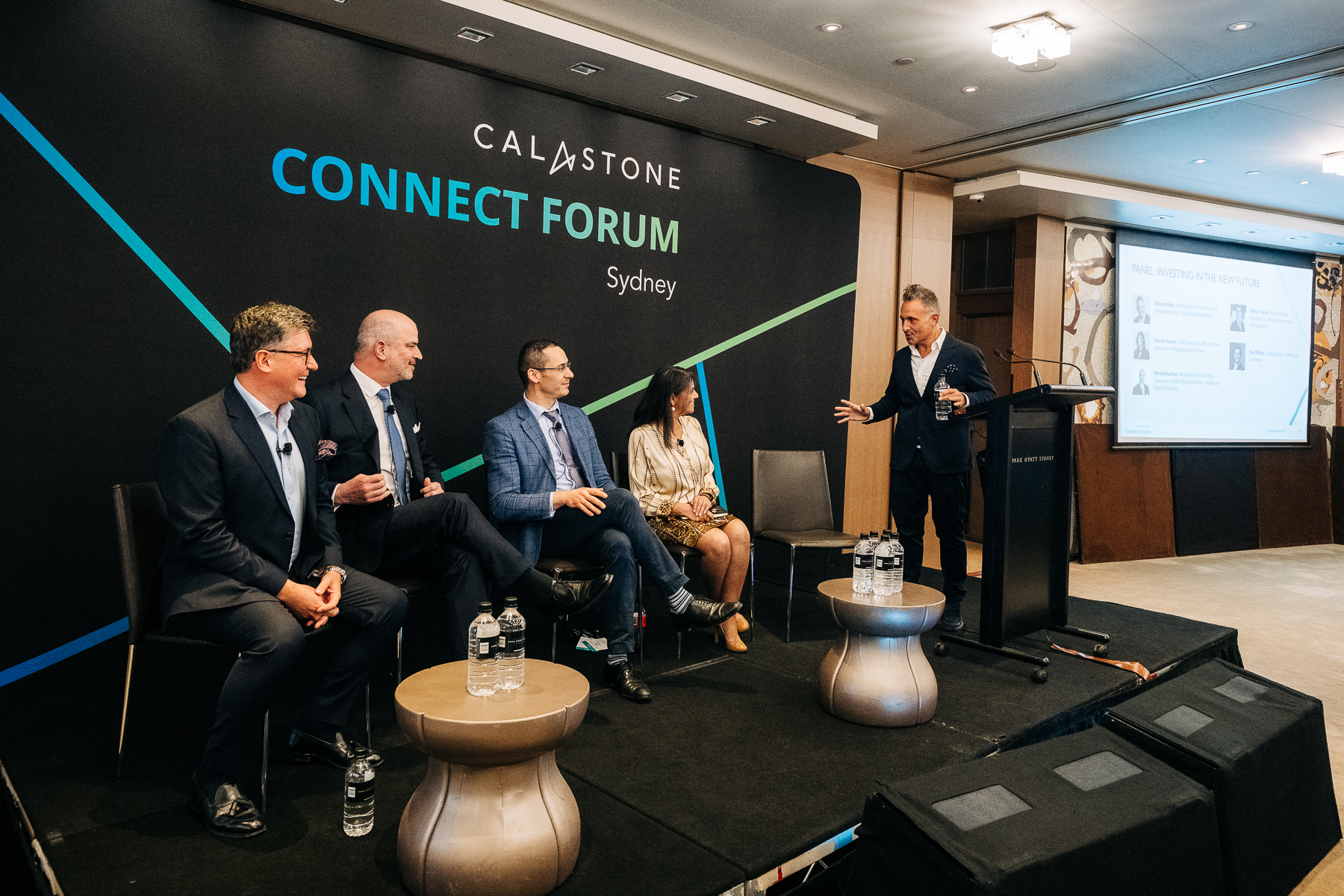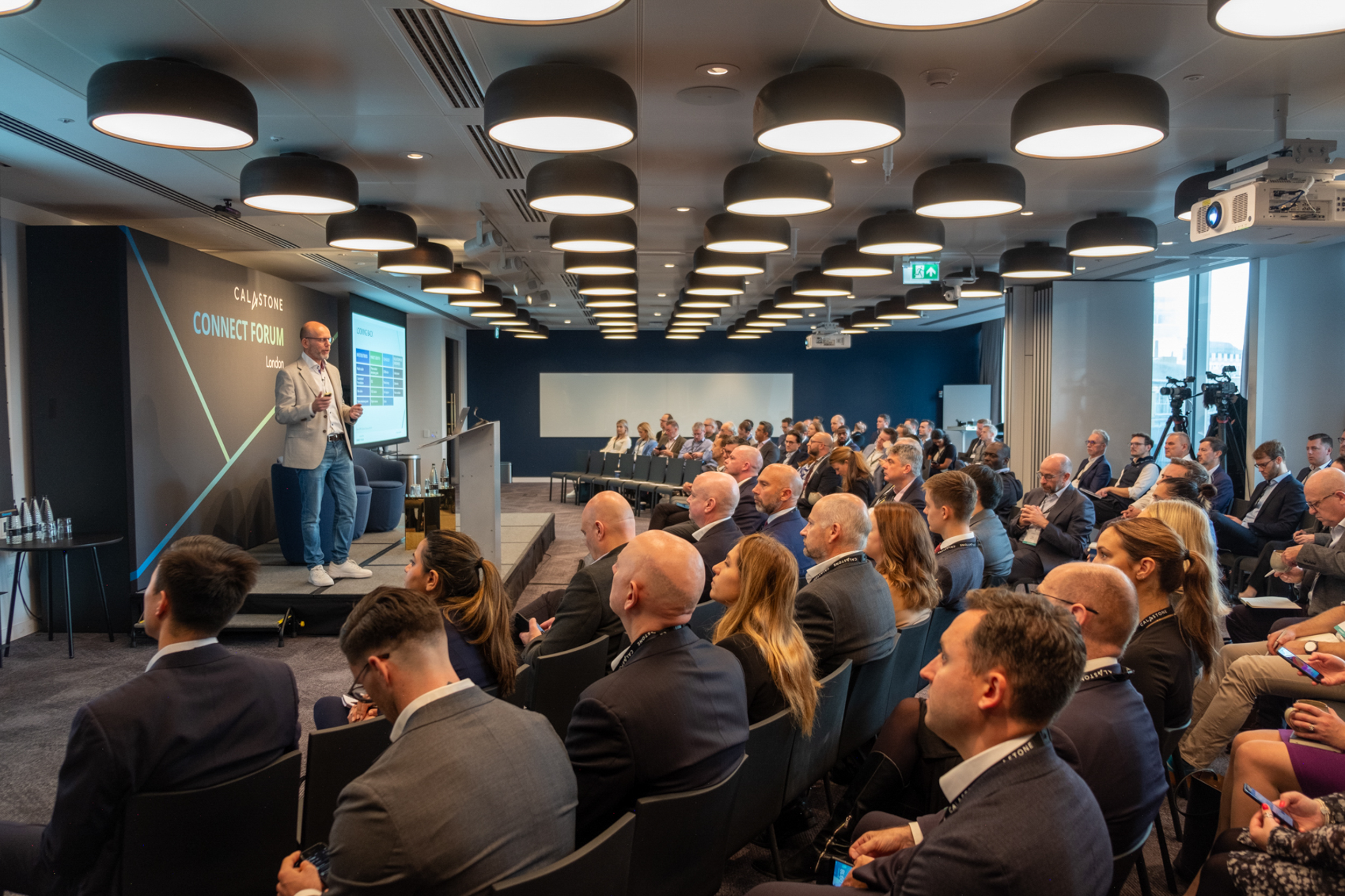How does Australia’s managed funds industry grasp the opportunities offered by widespread digitalisation? Can tokenisation usher in a new collective investment model built on next-generation infrastructure? How can we better connect with tomorrow’s investors?
These were some of the key questions discussed at our Connect Forum recently in Sydney, entitled ‘Embracing digital transformation: the future of managed funds’, which brought together senior figures from within the industry alongside a number of Calastone speakers.
The mix of challenge and opportunity was starkly set out. Ross Fox, Calastone’s head of APAC, stressed the need for the industry to act before it was ‘pushed into disruption’ like the music, media or retail industries before it. On the upside, Edward Glyn, head of global markets at Calastone, said the likes of tokenisation were a ‘once-in-a-lifetime opportunity to radically transform our industry for the better’.
The traditional managed fund structure ‘is not a recipe for success in a rapidly advancing digital age’, Glyn said, with so many different participants having to play their part for the supply chain to function. It is slow, costly, highly fragmented, difficult to service and certainly not ‘value-centric’. Little had changed, he said, since the first managed fund in 1924.
By contrast, tokenisation – where a fund is represented digitally on distributed ledger technology (DLT) infrastructure – gives all players, from asset managers, distributors and platforms to the many different service providers, access and input within a single, technical ecosystem.
This is no longer pie in the sky. At Calastone, we have spent the last eight years developing the technology. In 2019, we launched our DLT-enabled distributed market infrastructure (DMI) and we are now partnering with Microsoft to further evolve what we do. In a nutshell, we are in a position to power the new generation of collective investment products in a DLT-based platform covering the entire fund value chain.
And, unlike others that have developed DLT capability, our DMI is backed by the power of the Calastone network that instantly connects more than 3,000 members of the global funds industry. As Glyn said, ‘we can use our connectivity and infrastructure to enable fund managers to distribute new, token-based products globally from day one’.
Because tokenisation brings a high degree of efficiency, it not only has the power to transform fund industry economics but it paves the way for innovative products that would not otherwise be viable. Examples include customised, or even personalised, strategies giving differing exposures to a basket of assets, including private markets, illiquid and other non-traditional assets. The fractionalisation capabilities of tokenisation also democratise wealth management by allowing people to access high-value assets previously out of their reach.
Tokenisation can play a big part in bringing the industry closer to a new generation of investors. The pandemic, said Glyn, saw swathes of new, younger investors enter the market for the first time: ‘The appetite for fully digital investment products is only increasing. These investors want a user experience that is on a par with that offered by challenger bank or lifestyle apps – one that is easy to set up, allows instant purchases with clear and fair pricing, and offers the transparency to see whether the underlying investments align with their values.’
Alistair Densley, general manager – operations at Netwealth Investments, said people were increasingly expecting technology offerings. They wanted speed and immediacy. He also reflected on the power of partnership and how change can be accelerated by leveraging services such as Calastone’s to allow firms to focus their development resources on adding new features and capabilities.
Big issues remain, not least regulation, as was highlighted by members of our panel. Ramsin Jajoo, head of retail distribution at Pinnacle Investment Management, pointed to a number of unsuccessful attempts to make direct consumer sales models work: ‘No-one’s cracked the code’, he said, although funds listing on the Australian Stock Exchange may be getting there.
Annick Donat, chief executive officer at Clime Investment Management, said the industry in Australia remained highly regulated: ‘We’ve created more friction, not less. There is a real need to get off the merry-go-round.’ With its ability to use a unique client identifier throughout the system, tokenisation, she said, would create a kind of ‘industrial intimacy’ in terms of scale and access – and bring investors closer to their investments.
Harvey Kalman, group chairman of MSC Group said the current set-up was regulation-centric, not client-centric. To compete with other investment opportunities, the investor’s decision and its implementation had to be achievable through a series of simple taps on a keyboard or other devices.
‘By asking people to keep on repeating the data and re-identifying themselves – whether the fund is a complex structure or a simple one – we’re not allowing unlisted managed funds to compete. Adding another regulator, such as the ASX, just adds further disclosure requirements,’ he pointed out.
Calastone’s Paul Elflain brought an international perspective to the regulation issue. ‘We are starting to see change on the tokenisation issue,’ he said: ‘Singapore, Luxembourg, Germany, even the UK, are starting to put together a digital agenda. There are five or ten jurisdictions where we expect to see the launch of digital or tokenised investment products – all the way down to the retail investor – within the next year.’
There was a diversity of approaches. Some firms were working on new thematic products to deliver a kind of ‘mass personalisation’, he said. Some wanted to lower the barriers to separately managed accounts as tokenisation took cost out. Others were focusing on private assets and real estate – products that had provided good returns over time but were not currently accessible to retail clients. ‘There is exciting stuff out there,’ he enthused.
My personal view? I believe the industry must ensure it is master of its own destiny; it must do its own disrupting before others do it for us. We have the capability to deliver a major uplift in investor experience, but we need to figure how to take the regulator with us. It will need a collaborative effort across the whole industry – a reminder of the importance of connectivity. We have done it once with industry-wide automation. We must do it again to realise the undoubted benefits of tokenisation.




















